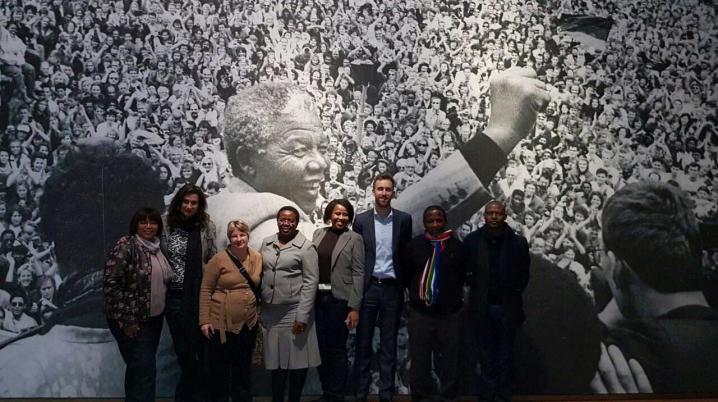
The exhibition Good Hope at the Rijksmuseum sheds light on the turbulent shared history of South Africa and the Netherlands. Good Hope shows 400 years of emotive history in 300 items, most of which come from South Africa.
In the build-up to Good Hope, we invited six museum directors from South Africa over for a working visit on collection management, exchanges between South African and Dutch museums, capacity building and the narratives of the shared past of South Africa and the Netherlands.
On 15 February the museum directors shared their visions on the historical relation between South Africa and the Netherlands during a visitors' talk. They discussed the turbulent history of South Africa, student protests against government institutions as well as the representation of the colonial (white) past and the social challenges for the South African heritage field.
Two important conclusions can be drawn from this conversation. Firstly, if an exhibition like Good Hope would be held in South Africa the narrative would be different. Efforts of the heritage field there are actually aimed at making connections between groups and social inclusion. The term ‘shared past’ is highly contested, and our visitors prefer to refer to the historical relationship between South Africa and the Netherlands instead. As Nikiwe Momoti, director of the Provincial Archive Service of Western Cape Government, points out: 'The history of South Africa did not start in 1652 when Jan van Riebeeck, merchant of the Dutch East India Company, founded the first European trading post.'
Secondly, nobody in South Africa can afford to ignore the call of the youth for a better representation of the history and heritage of their country. Veliswa Baduza, director of the South African Heritage Resources Agency is very clear: 'The heritage landscape needs to be reformed, the narratives need to be changed. South Africa as a democracy is now 22 years old and grown-up, so the country should have a grown-up representation of its history and heritage.'
All members of the delegation agreed on how the Netherlands and South Africa should cope with their shared past, or historical relationship: acknowledge that it doesn’t cover the whole story of South Africa as a country and that it is a multi-layered story with many different perspectives. Those stories should all be told and put into perspective. According to Matlotleng Matlou, board member of Ditsong Museums of South Africa: 'The past between the Netherlands and South Africa may be painful, but that doesn’t mean we cannot cope with it together.' Momoti adds: 'We cannot do anything about the past but we can do something for the future. That is why we collaborate.'
South Africa is one of the partner countries of the Netherlands’ international cultural policy (in Dutch). If you want to collaborate with South African partners, please contact us.
Read more about the exhibition and the historical relation of South Africa and the Netherlands (newspaper article in Dutch).



